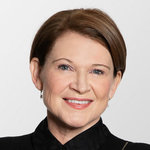
Commonwealth Bank of Australia
ASX:CBA


| US |

|
Johnson & Johnson
NYSE:JNJ
|
Pharmaceuticals
|
| US |

|
Berkshire Hathaway Inc
NYSE:BRK.A
|
Financial Services
|
| US |

|
Bank of America Corp
NYSE:BAC
|
Banking
|
| US |

|
Mastercard Inc
NYSE:MA
|
Technology
|
| US |

|
UnitedHealth Group Inc
NYSE:UNH
|
Health Care
|
| US |

|
Exxon Mobil Corp
NYSE:XOM
|
Energy
|
| US |

|
Pfizer Inc
NYSE:PFE
|
Pharmaceuticals
|
| US |

|
Palantir Technologies Inc
NYSE:PLTR
|
Technology
|
| US |

|
Nike Inc
NYSE:NKE
|
Textiles, Apparel & Luxury Goods
|
| US |

|
Visa Inc
NYSE:V
|
Technology
|
| CN |

|
Alibaba Group Holding Ltd
NYSE:BABA
|
Retail
|
| US |

|
JPMorgan Chase & Co
NYSE:JPM
|
Banking
|
| US |

|
Coca-Cola Co
NYSE:KO
|
Beverages
|
| US |

|
Walmart Inc
NYSE:WMT
|
Retail
|
| US |

|
Verizon Communications Inc
NYSE:VZ
|
Telecommunication
|
| US |

|
Chevron Corp
NYSE:CVX
|
Energy
|
Utilize notes to systematically review your investment decisions. By reflecting on past outcomes, you can discern effective strategies and identify those that underperformed. This continuous feedback loop enables you to adapt and refine your approach, optimizing for future success.
Each note serves as a learning point, offering insights into your decision-making processes. Over time, you'll accumulate a personalized database of knowledge, enhancing your ability to make informed decisions quickly and effectively.
With a comprehensive record of your investment history at your fingertips, you can compare current opportunities against past experiences. This not only bolsters your confidence but also ensures that each decision is grounded in a well-documented rationale.
Do you really want to delete this note?
This action cannot be undone.

| 52 Week Range |
142.36
191.4
|
| Price Target |
|
We'll email you a reminder when the closing price reaches AUD.
Choose the stock you wish to monitor with a price alert.

|
Johnson & Johnson
NYSE:JNJ
|
US |

|
Berkshire Hathaway Inc
NYSE:BRK.A
|
US |

|
Bank of America Corp
NYSE:BAC
|
US |

|
Mastercard Inc
NYSE:MA
|
US |

|
UnitedHealth Group Inc
NYSE:UNH
|
US |

|
Exxon Mobil Corp
NYSE:XOM
|
US |

|
Pfizer Inc
NYSE:PFE
|
US |

|
Palantir Technologies Inc
NYSE:PLTR
|
US |

|
Nike Inc
NYSE:NKE
|
US |

|
Visa Inc
NYSE:V
|
US |

|
Alibaba Group Holding Ltd
NYSE:BABA
|
CN |

|
JPMorgan Chase & Co
NYSE:JPM
|
US |

|
Coca-Cola Co
NYSE:KO
|
US |

|
Walmart Inc
NYSE:WMT
|
US |

|
Verizon Communications Inc
NYSE:VZ
|
US |

|
Chevron Corp
NYSE:CVX
|
US |
This alert will be permanently deleted.
Commonwealth Bank of Australia





In the heart of Sydney, the evolution of the Commonwealth Bank of Australia (CBA) is a testament to strategic adaptability and steadfast growth. Established in 1911, CBA began humbly as a government-owned savings and general banking entity, before privatisation in the early 1990s unlocked a new era of competitive dynamics and innovation. Today, it proudly stands as one of Australia’s “big four” banks, servicing millions with a comprehensive range of financial offerings. From personal banking, mortgages and credit cards, to insurance, investment, and business financial services, the bank deftly leverages its extensive retail network and advanced digital capabilities to fulfill diverse customer needs. Its business model is intricately woven with the fabric of daily Australian life, directing one of the most significant portions of household savings and loans in the country.
CBA’s profitability is rooted in its ability to expertly manage the spread between interest paid on deposits and interest earned on loans, traditionally its bread and butter. Yet, in a modern twist, it has also embraced technology with vigor, positioning itself as a leader in digital banking. Its award-winning app harnesses artificial intelligence and data analytics to enhance customer experiences and improve operational efficiencies. By investing heavily in technological infrastructure, CBA reduces its operational costs and opens new revenue streams through digital channels. Additionally, it adeptly diversifies income streams through wealth management and insurance services, building on a tradition of trust to cross-sell products that maintain customer loyalty and augment its earnings over time. In essence, CBA thrives by combining traditional banking principles with innovative technology, fostering a robust and resilient financial institution.

In the heart of Sydney, the evolution of the Commonwealth Bank of Australia (CBA) is a testament to strategic adaptability and steadfast growth. Established in 1911, CBA began humbly as a government-owned savings and general banking entity, before privatisation in the early 1990s unlocked a new era of competitive dynamics and innovation. Today, it proudly stands as one of Australia’s “big four” banks, servicing millions with a comprehensive range of financial offerings. From personal banking, mortgages and credit cards, to insurance, investment, and business financial services, the bank deftly leverages its extensive retail network and advanced digital capabilities to fulfill diverse customer needs. Its business model is intricately woven with the fabric of daily Australian life, directing one of the most significant portions of household savings and loans in the country.
CBA’s profitability is rooted in its ability to expertly manage the spread between interest paid on deposits and interest earned on loans, traditionally its bread and butter. Yet, in a modern twist, it has also embraced technology with vigor, positioning itself as a leader in digital banking. Its award-winning app harnesses artificial intelligence and data analytics to enhance customer experiences and improve operational efficiencies. By investing heavily in technological infrastructure, CBA reduces its operational costs and opens new revenue streams through digital channels. Additionally, it adeptly diversifies income streams through wealth management and insurance services, building on a tradition of trust to cross-sell products that maintain customer loyalty and augment its earnings over time. In essence, CBA thrives by combining traditional banking principles with innovative technology, fostering a robust and resilient financial institution.
Strong Profit Growth: Commonwealth Bank reported statutory and cash net profit of $5.2 billion for the half, up 9% year-on-year, driven by strong net interest income.
Dividend & Buyback: The Board declared a fully franked interim dividend of $2.10, up $0.35 per share, and announced a $1 billion increase to the on-market share buyback.
Margin Recovery: Net interest margins improved, peaking in October before stabilizing, but remain below pre-COVID levels due to intense competition and higher funding costs.
Cost Pressures: Operating expenses rose 5%, mainly from wage and supplier inflation, yet the cost-to-income ratio improved to 42.5%.
Credit Quality Stable: Loan impairment expenses increased as provisioning returned to more normal levels, but credit quality remains sound with arrears at record lows.
Economic Outlook: Management expects further rate rises, increased arrears, and a slowdown in consumer spending, but remains optimistic about Australia's medium-term prospects.
Deposit & Lending Trends: Deposit growth outpaced the system and lending continued to grow, but management noted the competitive environment in mortgages and home loans being written below cost of capital.
Management

Matthew Comyn is the CEO and Managing Director of the Commonwealth Bank of Australia (CBA), one of the country's leading financial institutions. He assumed the role on April 9, 2018, succeeding Ian Narev. Comyn has been instrumental in steering the bank through various challenges, prioritizing a customer-focused approach and aiming to restore trust and integrity within the bank. Comyn joined the CBA in 1999 and has held several senior executive positions over the years. Notably, he was the Group Executive for Retail Banking Services, the bank's largest division, where he was responsible for delivering exceptional services to millions of Australians. His leadership in this role was marked by a keen focus on enhancing customer experience and employing digital technologies to improve service delivery. He holds a Bachelor of Aviation, a Master of Commerce, and an Executive MBA from the University of New South Wales. Under Comyn's leadership, the bank has continued to evolve and innovate, focusing on integrating advanced technologies and maintaining a resilient financial structure while emphasizing ethical practices. Comyn is known for his commitment to sustainable finance and the integration of environmental, social, and governance (ESG) principles within the bank's operations and strategy. His leadership extends beyond financial performance, as he actively promotes a culture of transparency and accountability within the organization.

Comyn joined the CBA in 1999 and has held several senior executive positions over the years. Notably, he was the Group Executive for Retail Banking Services, the bank's largest division, where he was responsible for delivering exceptional services to millions of Australians. His leadership in this role was marked by a keen focus on enhancing customer experience and employing digital technologies to improve service delivery.
He holds a Bachelor of Aviation, a Master of Commerce, and an Executive MBA from the University of New South Wales. Under Comyn's leadership, the bank has continued to evolve and innovate, focusing on integrating advanced technologies and maintaining a resilient financial structure while emphasizing ethical practices.
Comyn is known for his commitment to sustainable finance and the integration of environmental, social, and governance (ESG) principles within the bank's operations and strategy. His leadership extends beyond financial performance, as he actively promotes a culture of transparency and accountability within the organization.

Gavin Munroe is a senior executive at the Commonwealth Bank of Australia, where he serves as the Group Executive for Technology and is the Group Chief Information Officer (CIO). He joined the bank to lead its technology strategy and operations, ensuring that the bank remains at the forefront of innovation and digital transformation in the financial services sector. His role involves overseeing the development and implementation of technological initiatives that enhance customer experience, improve operational efficiency, and drive competitive advantage for the bank. Before joining the Commonwealth Bank of Australia, Munroe had extensive experience in the financial services industry, particularly in leadership roles focused on technology and digital transformation. He served in various senior positions at prominent global institutions, bringing a wealth of knowledge and expertise in integrating advanced technologies into banking operations. Munroe is known for his emphasis on leveraging cutting-edge technology to create seamless and secure banking experiences for customers. His leadership is characterized by a commitment to excellence, innovation, and strategic growth, positioning the Commonwealth Bank of Australia as a leader in the adoption of new technologies in the banking sector.

Before joining the Commonwealth Bank of Australia, Munroe had extensive experience in the financial services industry, particularly in leadership roles focused on technology and digital transformation. He served in various senior positions at prominent global institutions, bringing a wealth of knowledge and expertise in integrating advanced technologies into banking operations.
Munroe is known for his emphasis on leveraging cutting-edge technology to create seamless and secure banking experiences for customers. His leadership is characterized by a commitment to excellence, innovation, and strategic growth, positioning the Commonwealth Bank of Australia as a leader in the adoption of new technologies in the banking sector.

Nigel Henry Murray Williams is a seasoned finance professional known for his significant contributions to the Commonwealth Bank of Australia (CBA). Holding a Bachelor of Commerce degree, Mr. Williams has developed a distinguished career in the banking and financial services industry. He joined CBA with extensive experience in risk management and banking operations, having held various high-level positions in the sector. At CBA, Nigel Williams served as the Group Chief Risk Officer, where he was responsible for managing the bank's risk profiles and implementing robust risk management strategies to ensure the stability and integrity of the bank's operations. In his role, he played a crucial part in navigating the bank through complex financial landscapes and regulatory environments, focusing on safeguarding the bank's assets and reputation. His expertise in risk assessment and mitigation was instrumental in maintaining CBA's resilience amidst economic fluctuations and challenges within the financial industry. Nigel Williams is recognized for his leadership skills and strategic thinking, contributing to the bank's sustainable growth and adherence to compliance standards. His tenure at CBA underlined his commitment to fostering a risk-aware culture and leveraging his deep understanding of financial markets and risk dynamics. Beyond his professional achievements, Mr. Williams is respected for his ability to lead multidisciplinary teams and drive initiatives that align with the bank's long-term objectives. Throughout his career, he has been dedicated to enhancing the risk management framework within banking institutions, reinforcing their capacity to thrive in a competitive and ever-evolving market.

He joined CBA with extensive experience in risk management and banking operations, having held various high-level positions in the sector. At CBA, Nigel Williams served as the Group Chief Risk Officer, where he was responsible for managing the bank's risk profiles and implementing robust risk management strategies to ensure the stability and integrity of the bank's operations.
In his role, he played a crucial part in navigating the bank through complex financial landscapes and regulatory environments, focusing on safeguarding the bank's assets and reputation. His expertise in risk assessment and mitigation was instrumental in maintaining CBA's resilience amidst economic fluctuations and challenges within the financial industry.
Nigel Williams is recognized for his leadership skills and strategic thinking, contributing to the bank's sustainable growth and adherence to compliance standards. His tenure at CBA underlined his commitment to fostering a risk-aware culture and leveraging his deep understanding of financial markets and risk dynamics.
Beyond his professional achievements, Mr. Williams is respected for his ability to lead multidisciplinary teams and drive initiatives that align with the bank's long-term objectives. Throughout his career, he has been dedicated to enhancing the risk management framework within banking institutions, reinforcing their capacity to thrive in a competitive and ever-evolving market.

Vittoria Annabel June Shortt is a prominent business executive known for her significant contributions to the banking sector in Australia. She served as the Chief Executive Officer of the Bank of New Zealand, a subsidiary of the National Australia Bank, where she demonstrated exceptional leadership and strategic vision. Before her role at the Bank of New Zealand, Shortt held various senior roles within the Commonwealth Bank of Australia (CBA), one of the country's leading financial institutions. At CBA, Vittoria Shortt held several key executive positions, including Group Executive of Marketing and Strategy and Group Executive of Retail Banking Services. Her work in these roles involved overseeing large teams and driving major initiatives aimed at enhancing customer experience, digital transformation, and business growth. With a background in business management and accountancy (BMS, CA), she has been instrumental in implementing effective strategies to streamline operations and improve financial performance. Shortt's leadership style is marked by her focus on innovation, customer-centric approaches, and fostering a strong organizational culture. Recognized for her business acumen and her ability to navigate complex financial landscapes, she continues to be a highly respected figure in the industry. Her achievements and contributions have earned her a strong reputation in the banking and financial services sector in Australia and New Zealand.

At CBA, Vittoria Shortt held several key executive positions, including Group Executive of Marketing and Strategy and Group Executive of Retail Banking Services. Her work in these roles involved overseeing large teams and driving major initiatives aimed at enhancing customer experience, digital transformation, and business growth. With a background in business management and accountancy (BMS, CA), she has been instrumental in implementing effective strategies to streamline operations and improve financial performance.
Shortt's leadership style is marked by her focus on innovation, customer-centric approaches, and fostering a strong organizational culture. Recognized for her business acumen and her ability to navigate complex financial landscapes, she continues to be a highly respected figure in the industry. Her achievements and contributions have earned her a strong reputation in the banking and financial services sector in Australia and New Zealand.

Sinead Taylor serves as an integral executive at the Commonwealth Bank of Australia (CBA). She holds the position of Executive General Manager (EGM) for the Business Banking division of the bank. In this leadership role, she is responsible for overseeing and guiding the bank's strategy, services, and the delivery of solutions tailored for small to medium enterprises (SMEs) in Australia. With a significant focus on fostering growth and providing comprehensive banking solutions, Taylor's leadership is pivotal in ensuring that Commonwealth Bank efficiently meets the dynamic needs of its business customers. Her approach involves merging traditional banking with innovative solutions to support entrepreneurial ventures and business expansions. Taylor's professional background is rich with extensive experience in financial services, carrying out roles that span various facets of banking and finance. Her expertise and keen insight into the business banking sector have been instrumental in driving the success and growth of CBA's market presence among business clients. Sinead Taylor is recognized for her strategic vision, commitment to customer service, and her efforts to enhance the bank's offerings through technological and service improvements, ensuring that the bank remains competitive and relevant in the evolving financial landscape.

With a significant focus on fostering growth and providing comprehensive banking solutions, Taylor's leadership is pivotal in ensuring that Commonwealth Bank efficiently meets the dynamic needs of its business customers. Her approach involves merging traditional banking with innovative solutions to support entrepreneurial ventures and business expansions.
Taylor's professional background is rich with extensive experience in financial services, carrying out roles that span various facets of banking and finance. Her expertise and keen insight into the business banking sector have been instrumental in driving the success and growth of CBA's market presence among business clients.
Sinead Taylor is recognized for her strategic vision, commitment to customer service, and her efforts to enhance the bank's offerings through technological and service improvements, ensuring that the bank remains competitive and relevant in the evolving financial landscape.


Melanie Kirk serves as the Executive General Manager at the Commonwealth Bank of Australia (CBA). In her role, she is responsible for leading initiatives that focus on enhancing customer experience and driving strategic growth within the bank. With a robust background in finance and banking, Ms. Kirk has held various leadership positions at CBA that emphasize innovation, digital transformation, and customer engagement. Her work involves collaborating with different teams to implement cutting-edge technology solutions that improve the bank's operations and services. Known for her leadership skills and strategic vision, Melanie Kirk plays a crucial role in positioning the Commonwealth Bank as a leader in the financial sector. Throughout her career, she has been committed to fostering a culture of inclusivity and sustainability within the banking industry. Her expertise and forward-thinking approach continue to contribute significantly to the bank's ongoing success and reputation in the market.

Her work involves collaborating with different teams to implement cutting-edge technology solutions that improve the bank's operations and services. Known for her leadership skills and strategic vision, Melanie Kirk plays a crucial role in positioning the Commonwealth Bank as a leader in the financial sector.
Throughout her career, she has been committed to fostering a culture of inclusivity and sustainability within the banking industry. Her expertise and forward-thinking approach continue to contribute significantly to the bank's ongoing success and reputation in the market.

Karen O'Flynn is the Chair of the Board at the Commonwealth Bank of Australia (CBA), bringing extensive experience in law, management, and governance to the role. Before her position at CBA, she was a leading partner at Clayton Utz, one of Australia's largest law firms, where she specialized in restructuring and insolvency. O'Flynn's legal acumen and leadership capabilities have been instrumental in guiding the strategic direction of the bank, and she has been involved in various initiatives to enhance corporate governance and ethical practices within the organization. Her contributions extend to promoting diversity and innovation in the financial sector. Her leadership at CBA reflects a commitment to maintaining the bank's stability and fostering its growth in a rapidly evolving economic environment.


Ms. Monique Macleod is a senior executive at the Commonwealth Bank of Australia (CBA), where she has held key leadership roles. She is the Chief Marketing Officer (CMO) and is responsible for overseeing the bank’s marketing strategies and customer engagement initiatives. In her role, Monique leads the development and execution of marketing campaigns that enhance the brand’s visibility and resonate with customers, driving both customer satisfaction and business growth. With a career spanning over two decades, Monique has amassed substantial experience in marketing and brand management. Before joining CBA, she held significant roles in other major organizations, building a strong reputation for her strategic insight and innovative approach to marketing. Her leadership has been pivotal in elevating CBA’s brand presence in a competitive financial services landscape. Monique holds a Bachelor of Business degree with a focus on Marketing and Human Resource Management, demonstrating her solid academic foundation in the field. Known for her dynamic leadership style, she is committed to fostering a customer-centric culture within the bank, ensuring that customer needs are at the forefront of all marketing initiatives. Her work at CBA involves not only traditional marketing but also embracing digital transformation to enhance customer experiences and engagement through cutting-edge technologies and data-driven insights. Monique Macleod is regarded as a key influencer in the industry, continuously contributing to the evolving marketing landscape in the banking sector.

With a career spanning over two decades, Monique has amassed substantial experience in marketing and brand management. Before joining CBA, she held significant roles in other major organizations, building a strong reputation for her strategic insight and innovative approach to marketing. Her leadership has been pivotal in elevating CBA’s brand presence in a competitive financial services landscape.
Monique holds a Bachelor of Business degree with a focus on Marketing and Human Resource Management, demonstrating her solid academic foundation in the field. Known for her dynamic leadership style, she is committed to fostering a customer-centric culture within the bank, ensuring that customer needs are at the forefront of all marketing initiatives.
Her work at CBA involves not only traditional marketing but also embracing digital transformation to enhance customer experiences and engagement through cutting-edge technologies and data-driven insights. Monique Macleod is regarded as a key influencer in the industry, continuously contributing to the evolving marketing landscape in the banking sector.
































